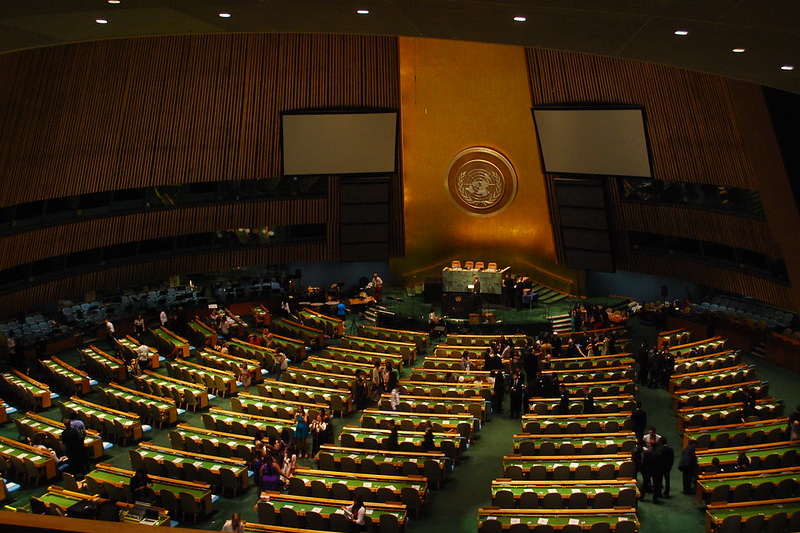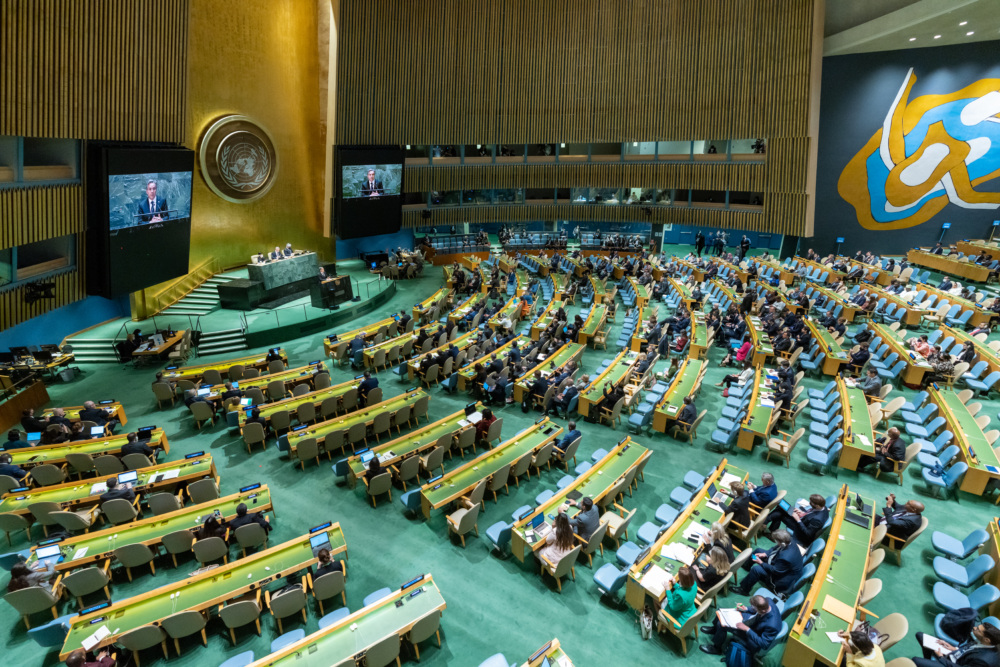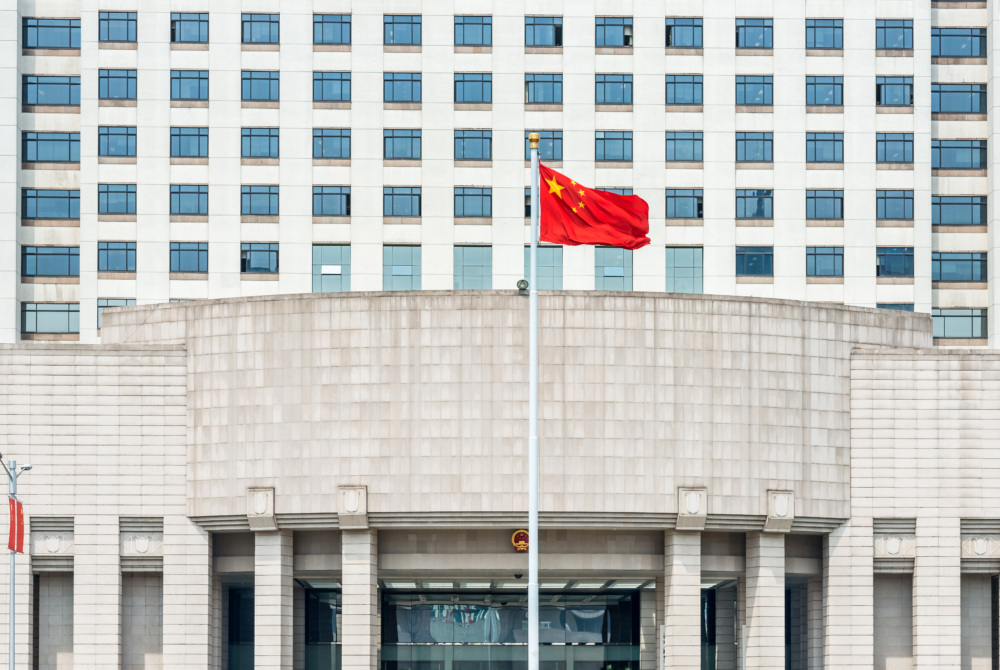
Ellen Swicord
Former Intern, NTI
Atomic Pulse
Government leaders from around the world have made their way to the United Nations Headquarters in New York for the 2022 Treaty on the Non-Proliferation of Nuclear Weapons (NPT) Review Conference (RevCon). This will be the 10th RevCon since the NPT entered into force in 1970, and it comes at a historically tense moment in the global security environment: Russia has repeatedly threatened nuclear use related to its war in Ukraine, China has begun an unprecedented expansion of its nuclear arsenal, the United States has made plans to modernize its nuclear forces, North Korea continues to make nuclear provocations, and the breakdown of the Joint Comprehensive Plan of Action (JCPOA) has led Iran to enrich almost all of the uranium it will need for a bomb.
Given these challenges, the RevCon will provide a much-needed opportunity for States parties to engage in dialogue about their shared commitment to the NPT and develop concrete steps to strengthen the NPT and the broader nonproliferation regime.
How has the NPT contributed to international security?
The political and legal framework of the NPT has served as the foundation of the international nonproliferation regime since 1970. The treaty requires the P5 nuclear-weapon States (NWS) – China, France, Russia, the United Kingdom, and the United States – to pursue disarmament “in good faith” and prohibits them from transferring nuclear weapons or associated technology to non-nuclear weapon States (NNWS). The treaty also prohibits NNWS from pursuing nuclear weapons through any means and codifies the right of all States parties to pursue peaceful uses of nuclear energy under a safeguards system administrated by the International Atomic Energy Agency.
The treaty’s 191 signatories have built consensus around the ideals of nuclear nonproliferation and disarmament and acceptable norms for state behavior. Without these norms and legal obligations, it is highly likely that nuclear weapons would have proliferated to many more states. As it stands today, there are only four states outside the NPT’s constraints that have nuclear weapons – India, Pakistan, North Korea, and reportedly Israel.
What challenges do the NPT and the RevCon face?
The Deteriorating Arms Control Environment
Many of the arms control agreements that complement the NPT have fallen apart since the last RevCon in 2015. This trend constitutes a serious threat to the NPT regime. In 2019, the United States withdrew from the Intermediate-Range Nuclear Forces (INF) Treaty in response to Russian violations of the treaty. In another blow to arms control efforts, the United States and Russia withdrew from the confidence-building Treaty on Open Skies that had allowed the parties (the United States, Russia, 31 European countries, and Canada) to carry out unarmed aerial surveillance flights over each other’s territory. The Conventional Forces in Europe Treaty, which sought to reduce the possibility for major offensive operations in Europe by equally limiting major armaments for NATO and Warsaw Pact members, has also broken down.
Explicit Russian nuclear threats have more recently triggered concern that Russia might deploy a small tactical nuclear weapon to make further gains in the war in Ukraine and deter Western interference. These threats are already undermining the taboo against nuclear use that has prevailed since World War II – but the decision to use a tactical nuke would be catastrophic. The New START Treaty – the last remaining constraint on U.S. and Russian strategic nuclear warheads and delivery vehicles – is set to expire in 2026. U.S.-Russia dialogue on a possible successor agreement was suspended in the wake of Russia’s invasion of Ukraine, with little indication that discussions will resume in the near future.
An Uncertain Future for Nonproliferation
North Korea and Iran continue to present major challenges to the nonproliferation regime. North Korea’s nuclear weapons and missile programs continue to grow and the regime has substantially increased the pace of missile testing in the last year. South Korean President Yoon Seok-yeol said this month that North Korea is “fully ready” to conduct a nuclear test in the near term – something it has not done since 2017.
Iran does not yet have a nuclear weapon but has made considerable progress in its uranium enrichment program since the United States withdrew from the JCPOA in 2018. Kamal Kharazi, former Iranian foreign minister and senior adviser to Iran’s Supreme Leader Ayatollah Ali Khamenei, stated publicly this month that Iran “can easily produce 90% enriched uranium…[and] has the technical means to produce a nuclear bomb.”
Rising U.S.-China tensions have also bled into the nonproliferation arena. China is expanding its nuclear arsenal at a breakneck pace and, according to U.S. Department of Defense predictions, will approximately triple its stockpile of nuclear warheads by 2030. In response to the perceived threat posed by China, the United States has sought to solidify its presence in the Asia-Pacific, including through the 2021 AUKUS security pact by which the United States and United Kingdom will supply Australia with nuclear-powered submarines. China has stridently denounced the pact as aggravating an arms race in the Asia-Pacific and heightening nuclear proliferation risks. Some NPT States parties have expressed concern over the precedent set by the transfer of nuclear propulsion technology to Australia, even though it is allowed under the NPT. AUKUS will likely be the subject of fierce debate at the RevCon.
Divisions Between NWS and NNWS
For years, NNWS have grown increasingly frustrated by the lack of progress from NWS on disarmament, as mandated by Article VI of the NPT. As prospects for nuclear force reductions wane amid Russia’s war in Ukraine, divisions between NPT States parties on disarmament have become even more acute and will likely emerge as an obstacle to cooperation at the RevCon.
This will be the first RevCon since the January 2021 entry into force of the Treaty on the Prohibition of Nuclear Weapons (TPNW), which primarily emerged from concern among some NNWS about the humanitarian consequences of nuclear weapons use and the lack of progress on nuclear disarmament. Unlike the NPT, the TPNW comprehensively prohibits all nuclear weapons activities for all States parties, including but not limited to prohibitions on testing, stockpiling, threat of use, or deployment of nuclear weapons on national territory.
With 86 Signatory States and 66 States Parties, the TPNW has considerable support – with the notable exception of the NWS, all NATO allies, and U.S. allies in Asia. NWS have criticized the TPNW for ignoring the realities of the international security environment and avoiding the practical challenges associated with disarming too quickly, including verification. Debate over whether and how to reference the entry into force of the TPNW in an outcome document at the RevCon could prove controversial, as NWS will likely resist efforts to legitimize the TPNW while the TPNW’s supporters will seek acknowledgment of this significant development in the global disarmament regime.
What constructive actions could States parties take at the RevCon to advance the goals of the NPT and ensure a successful outcome of the conference?
Over the past four years, the Nuclear Threat Initiative’s Global Enterprise to Strengthen Non-Proliferation and Disarmament has convened officials and non-government experts from more than 20 countries to discuss practical steps, new initiatives, and tangible commitments NPT States parties can make to advance treaty goals at the upcoming RevCon.
Drawing from these discussions, the NTI team has put together a set of recommendations for achieving success at the RevCon. These recommendations include:
NTI will be closely following the proceedings and assessing the outcome of the RevCon, which will conclude on August 26. It will not be an easy meeting. But the myriad challenges facing the RevCon – geopolitical tensions, persistent proliferation risks, and the dangerously high risk of nuclear use – make it all the more important that States parties engage constructively to preserve and strengthen the NPT.
Sign up for our newsletter to get the latest on nuclear and biological threats.
As officials prepare to meet in Vienna for the 2023 PrepCom, they should consider some of the key themes that have emerged from NTI’s Global Enterprise to Strengthen Non-Proliferation and Disarmament.
Amid uncertainty around China’s expanding nuclear program and silence from Beijing about the intent behind the build-up, a new report offers details about China’s nuclear program that suggest significant implications for U.S. and global security.
"Visiting Hiroshima imparted to me a deep sense of responsibility as well as a renewed energy to work towards a world without nuclear weapons," writes Program Officer Ananya Agustin Malhotra.



